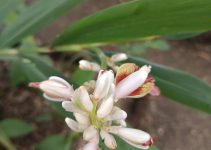Chamomile
Chamaemelum nobile, Matricaria recutita
Chamomile’s dainty daisylike blooms glisten when dew-spangled and glow in moonlight. Carpet a garden path or patio with Roman chamomile, a flowering groundcover that releases a delicate fragrance when crushed underfoot. Use this herbal groundcover in the garden to edge beds with a feathery, fast-spreading quilt or to cascade artfully over the rim of containers. German chamomile is a bushy beauty that’s a favorite among bees and butterflies. Tucked into flower beds, it offers season-long color. Chamomile blooms brew a soothing tea. Toss fresh blossoms over salad, or use fresh or dried leaves to season butter, cream sauce, or sour cream.
Light: Part sun, Sun
Type: Annual. Herb, Perennial
Height: From 1 to 8 feet
Width: 3-18 inches wide
Flower color: White
Seasonal features: Spring bloom, Summer bloom
Problem solver: Deer resistant, Drought resistant, Groundcover, Slope/Erosion conrol
Special features: Attracts birds, Fragrance, Good for containers, Low maintenance
Zones: 3-9
How to Grow Chamomile Herb
As stated, both kinds of chamomile grow in similar conditions, so from here on down, we will refer to them as just chamomile.
You can grow chamomile in USDA plant hardiness zones 3 to 9.
Plant chamomile in the spring from either seeds or plants. It is easier to establish chamomile herb in your garden from plants or divisions than from seeds but growing chamomile from seed is also relatively easy.
Chamomile grows best in cool conditions and should be planted in part shade, but will also grow full sun. The soil should be dry.
Once your chamomile is established, it needs very little care. Like most herbs, it grows best when it is not fussed over. Too much fertilizer will result in lots of weakly flavored foliage and few flowers.
Chamomile is drought tolerant so only needs to be watered in times of prolonged drought.
For the most part, chamomile is not affected by many pests. It is often recommended as a companion plant to plant in the vegetable garden as its strong scent often keeps pests away. That being said, a chamomile plant weakened by lack of water or other issues may be attacked by aphids, mealybugs or thrips.

